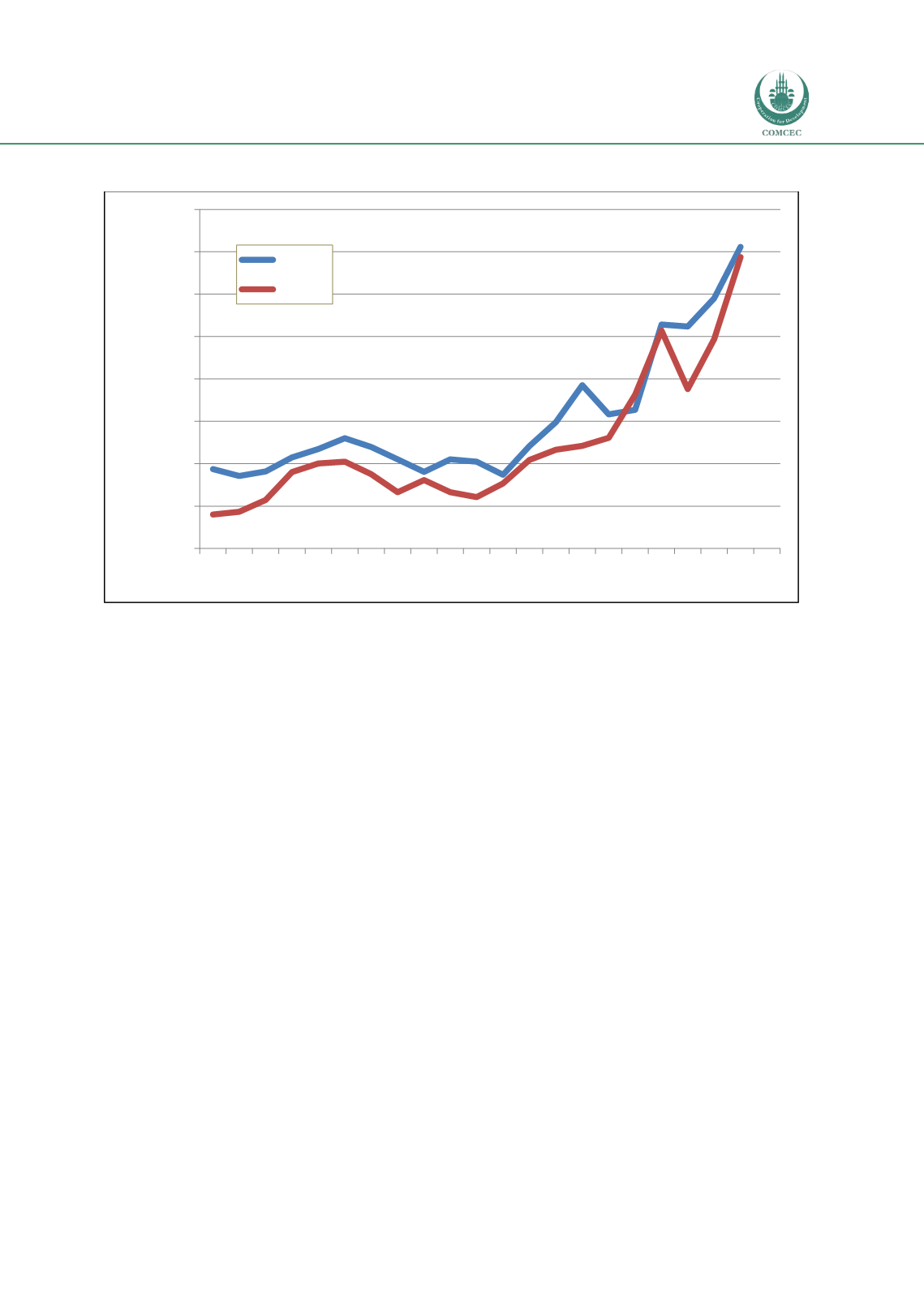

Increasing Agricultural Productivity:
Encouraging Foreign Direct Investments in the COMCEC Region
69
Figure 30: Turkey’s Agricultural Exports and Imports 1991-2011 (US$ ‘000)
Source:
FAO
Around 40 percent of Turkey’s land area is arable and a large range of products are cultivated,
including grains, pulses, oil seeds, fruits and vegetables, cut flowers, poultry, milk and dairy
products, fishery, honey and tobacco. Crop production, livestock, and fishery/forestry account
for 67 percent, 26 percent, and 7 percent of the total agricultural production, respectively.
Turkey is a globally important producer and exporter of many agricultural products, including
hazelnuts, dried apricots, sultanas/raisins, and dried figs. In addition, Turkey’s food industry is
generally more advanced than that of most neighbouring countries. Given these factors, the
country is one of the largest exporters of agricultural products in the Eastern Europe, Middle
East and North Africa (EMEA) region, and its trade balance is significantly positive, even as
growing affluence has caused imports of agro-food items to increase faster than exports.
Turkey’s agricultural production has grown even faster than its agricultural trade, as shown in
Figure 31. After falling through the 1990s, it has since risen at an annual average rate of 13
percent.
0
2.000.000
4.000.000
6.000.000
8.000.000
10.000.000
12.000.000
14.000.000
16.000.000
1991
1992
1993
1994
1995
1996
1997
1998
1999
2000
2001
2002
2003
2004
2005
2006
2007
2008
2009
2010
2011
Exports
Imports

















